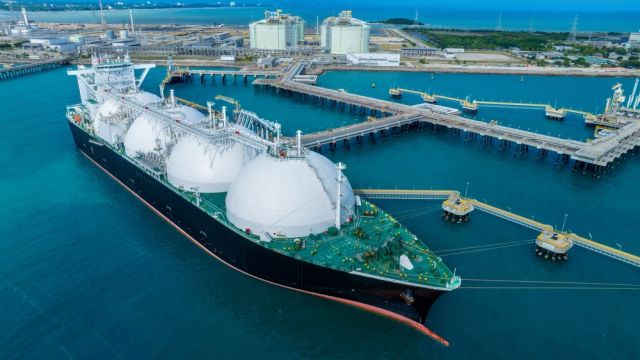
Rystad sees global LNG supply approach 850 Bcm annually by 2030, with around 30% likely coming from the U.S. (Source: Shutterstock)
U.S. LNG shipped to Asia could emit up to 50% less than even the cleanest coal-powered plants, according to Rystad Energy.
Even with the assumption of high methane leakage rates, generally, the value chain of U.S. LNG headed to Asia has a lower emissions footprint than domestic coal used for power, Rystad said in a June 11 research report.
Rystad sees global LNG supply approach 850 Bcm annually by 2030, with around 30% likely coming from the U.S. The research company expects gas demand in Asian markets to remain strong, and sees LNG as a key competitor to coal in power generation.
But the rule that LNG is cleaner than coal is not hard and fast.
“There are some Asian coal power stations that could have lower value chain emissions than some of the high-emitting LNG sources,” according to Rystad.
“There are significant variations between U.S. LNG sources, coal sources … and power plants, as well as uncertainties regarding methane emissions through both value chains,” Rystad said.
New measurement technology suggests methane emissions to be higher than expected in the coal and oil and gas value chains, Rystad said.
But there is still no tried and true method to accurately quantify emissions from a particular energy source.
A lack of granular and high-quality measurement data is a major challenge when assessing the methane emissions associated with the LNG and coal value chains, Rystad said. And satellite monitoring still has its limitations, particularly with its detection threshold, as satellites with global coverage are unable to register smaller methane plumes.
“Accurately quantifying emissions for any energy source is essential to understanding its full environmental impact. As the global focus swings towards methane emissions, and the wealth of credible data grows from more granular satellites and increased on-site measurements, the uncertainty within the methane data will begin to contract,” Rystad Energy senior analyst Patrick King said in the report.
Recommended Reading
Watch for Falling Gas DUCs: E&Ps Resume Completions at $4 Gas
2025-01-23 - Drilled but uncompleted (DUC) gas wells that totaled some 500 into September 2024 have declined to just under 400, according to a J.P. Morgan Securities analysis of Enverus data.
Ring May Drill—or Sell—Barnett, Devonian Assets in Eastern Permian
2025-03-07 - Ring Energy could look to drill—or sell—Barnett and Devonian horizontal locations on the eastern side of the Permian’s Central Basin Platform. Major E&Ps are testing and tinkering on Barnett well designs nearby.
Huddleston: Haynesville E&P Aethon Ready for LNG, AI and Even an IPO
2025-01-22 - Gordon Huddleston, president and partner of Aethon Energy, talks about well costs in the western Haynesville, prepping for LNG and AI power demand and the company’s readiness for an IPO— if the conditions are right.
BKV Positions Itself to Meet Growing Power, CCS Demand
2025-02-26 - Electricity needs across the U.S. are expected to soar as industrial and manufacturing facilities, data centers and other consumers crave more power. BKV is exploring ways to bridge the gap between demand and energy supply.
US Drillers Add Oil, Gas Rigs for First Time in Eight Weeks
2025-01-31 - For January, total oil and gas rigs fell by seven, the most in a month since June, with both oil and gas rigs down by four in January.
Comments
Add new comment
This conversation is moderated according to Hart Energy community rules. Please read the rules before joining the discussion. If you’re experiencing any technical problems, please contact our customer care team.




